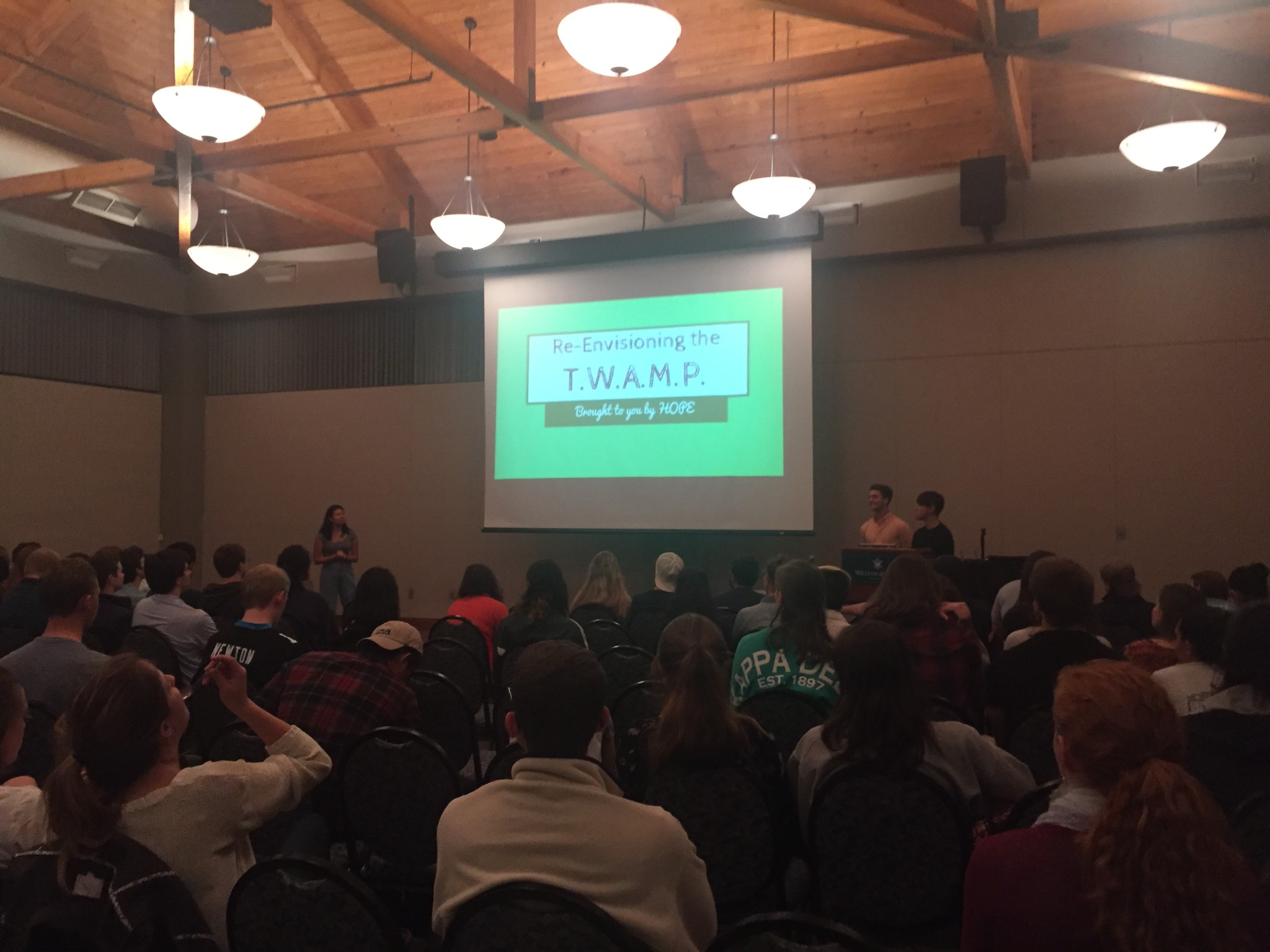Representatives from Health Outreach Peer Educators at the College of William and Mary presented “Re-Envisioning the TWAMP” on Nov. 3 in response to the growing association of negative stereotypes with the concept of the “typical William and Mary person.”
The interactive presentation, given by David Pontari ’18, Thomas Le ’17 and Anna Wong ’17, was intended to equip students with resources and strategies to combat the stresses of being a “twamp.” According to HOPE president Kelly Gorman ’17, “twamp” can and should have positive connotations.
“A ‘twamp’ is resilient, engaged, passionate, compassionate with others and with themselves.” Gorman said.
The usage of the word “twamp,” however, has come to be associated with high levels of stress, over-commitment and numerous hours of “Swemming.”
Working around the image of a “twamp” being over-stressed and over-stretched, the presentation outlined a behavioral shift College students could use to aid their mental health. These changes in behavior were labeled by the presentation as a “paradigm shift,” or fundamental change in approach to a certain behavior or decision.
This paradigm shift is an attempt to change a “have to” to a “want to.” Wong said allowing to-do lists to take control often overwhelms students, increasing their stress and anxiety.
This paradigm shift is an attempt to change a “have to” to a “want to.” Wong said allowing to-do lists to take control often overwhelms students, increasing their stress and anxiety.
“Usually we say, ‘I have to do this paper, have to be in Swem, have to be in a lab for 36 hours straight, have to go to this party, have to plan this event,’” Wong said. “We can feel a little out of control.”
Le, the president of the mental health branch of HOPE, said that students should also attempt to shift from balance to harmony.
“Balance implies equality [in] everything that we care about,” Le said. “We always have to find that perfect balance. The idea of balance often paralyzes us.”
The harmony students should work to achieve is not found through evaluating oneself based on accomplishments or one’s ability to find the impossible perfect balance, but on personal values. These personal values can include caring for friends, being part of a family or caring for the environment.
The presentation also encouraged students to reduce stress by shifting from self-evaluation to regular appreciation. According to Wong, questions such as, “What do I still have to do? How am I doing in this class? When do I have that meeting? How many more pages do I have to do?” are indicative of self-evaluation based on achievement. Twisting the questions around to focus on, “What did I do?” rather than “What did I not do?” is a simple strategy that can elevate mental health.
According to Le, stress doesn’t necessarily have to be a bad thing when taken in small amounts.
“One negative stigma that was attached to ‘twamp’ was the idea that we’re all very stressed,” Le said. “However, one thing that we really want to shift is that stress isn’t necessarily a bad thing. In fact, the fact that we’re stressed just indicates what’s important to us. If we’re stressed about an exam, it just means we care about it. We wanted to show that as “twamps” we have the skills and abilities to accept our stress and transform it into something productive and powerful.”
The presenters recommended resources like the Counseling Center, HOPE outreach programs and Campus Recreation to support students’ physical health and wellness. Friends and family were also pointed out as supportive resources.
Alexander Williams ’17, attended the presentation and said that speaking with a counselor who is both a professional and a great listener is the reason he has continued going to the Counselor Center.
“I liked what they said, that you don’t have to be going through something traumatic when you go to the Counseling Center. It could be just to talk about your life, to gain some clarity.” — Alexander Williams ’17
“It’s been a really good experience for me,” Williams said. “I liked what they said, that you don’t have to be going through something traumatic when you go to the Counseling Center. It could be just to talk about your life, to gain some clarity.”
The presenters repeatedly emphasized that the people behind the stereotypes of “twamps” are William and Mary Persons, or “wamps,” who possess the ability to positively reshape their “typical” identity.
“We believe that we are all proponents and part of the culture we inhabit,” Le said. “Even though the community we are in affects us, we also affect the community we are part of.”

